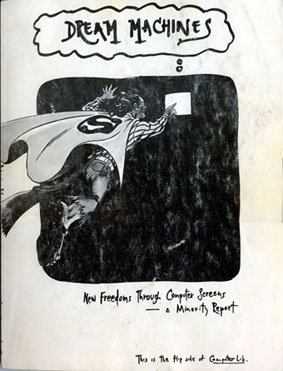

INTRODUCTION:
Have you ever wondered what that 'http' part of the URL means? I have. I have looked it up many times, always impressed with it's notion of a 'hyper'-element, the Hyper Text Transfer Protocol, such a lovely phrase referring to it's function as hyper-text as opposed to the linear perspective that was revolutionized with the introduction of computing technology.

The terms Hypertext and Hypermedia, commonly used in the World Wide Web, was coined by Ted Nelson, an American information technology pioneer who invented the Xanadu Project as an example of a network with a simple user-interface. Does this sound familiar? Yes it is exactly what Tim Berners-Lee later launched as the WWW (W3).
But how did this W3 version of a global network become the sole source of information for the majority?
Well, Ted Nelson wasn't exactly the proper representant for a world-wide network. He had another project: the electronic sex toys Teledildonics/Cyberdildonics. He had a vision of bringing the humanity into this utopian dimension, and surely sexuality and love should be transferred as well. He presented literature on the subject of the liberating internet such as the book Computer Lib/Dream Machine where he proclaims that the user "can and MUST understand computers NOW".

What Nelson actually referred to with the initials HTTP was in fact the Foucault term of Heterotopia - a space of otherness, a non-space, a space simultaneously physical and mental. Maybe a non-mercantile space? An alternative to the still more commercialized, capitalized and privatized sphere that we all know too well?
Nelson's ideals of the liberating system where the users of a structure (inhabitants of a society) would be armed with an awareness of the structures surrounding them did not seem compatible with the plans that what we know as the World Wide Web should later be used against the users, as we shall reveal in the following chapters...

CHAPTER 1 - WorldWideWeb or WorldWideWar?
© MuseumOfTheInter.net